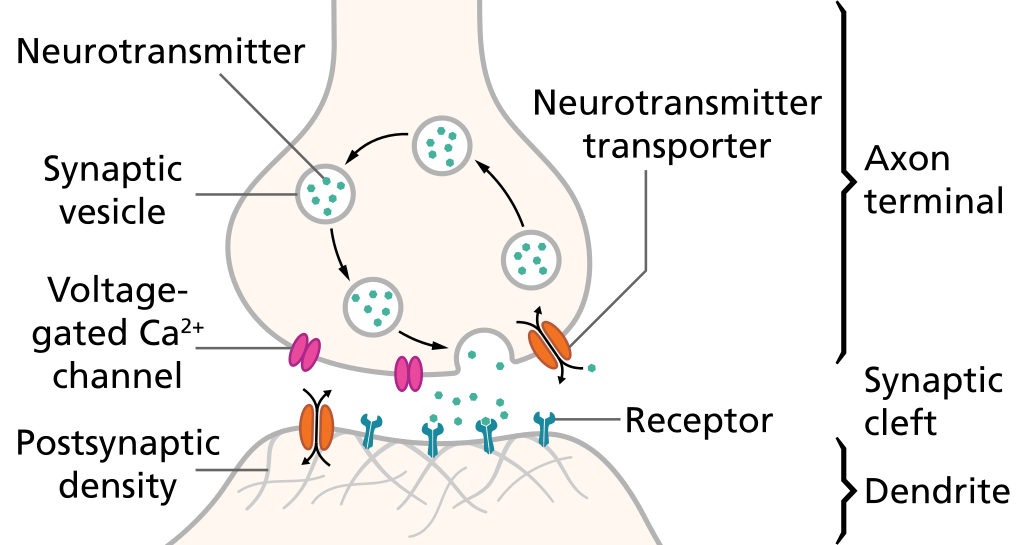Describe effects of the neurotransmitter acetylcholine?
1 Answer
Neurotransmitters are chemicals which are released at the axon ending of the neurons, at synapse.
Explanation:
Acetylcholine is the main transmitter for synapses that lies outside the central nervous system.
Process:
The axons of one neuron are connected to the dendrites of the other.Due to no cytoplasmic connections b/w the two, microscopic gaps are left b/w them. Each of these contact points are known as
A nerve impulse is passed from one neuron to the other through synapse, but it is not necessary that a single impulse may pass through a synapse. It may take two or three impulses arriving in a rapid succession or perhaps from two or more fibers to start an impulse in the next neuron.
The

When an impulse reaches the synaptic knob, synaptic vesicles within fuse with the synaptic membrane, causing the release of neurotransmitter molecules into the synaptic cleft.
These neurotransmitter molecules bind to the receptors on the postsynaptic membrane, triggering action potential in the postsynaptic neuron by causing changes in permeability of certain ions.
This mechanism is common to all neurotransmitters with a few or more variations.
Effects: (https://www.livestrong.com/article/373400-the-effect-of-acetylcholine-on-muscle/)
Skeletal, or striated, muscle cells contract in response to input from the nervous system. A motor neuron contacts a muscle cell at a structure called a motor end plate. The muscle cell membrane contains nicotinic receptors that are sensitive to acetylcholine. These receptor molecules, made of protein, are concentrated where acetylcholine is released. The nicotinic receptor is a ligand-gated sodium channel. This means that when acetylcholine, the ligand, binds to a receptor, the receptor changes its shape in a way that lets sodium enter the muscle cell.
Acetylcholine’s Effect On The Muscle Membrane:
The influx of sodium depolarizes the muscle cell in the vicinity of the motor endplate. Depolarization means the difference in charge between the inside and outside of the muscle is reduced. A different type of sodium channel, which is activated in response to depolarization, lets more sodium in and the wave of excitation spreads throughout the muscle cell. This leads to the release of calcium ions from storage sites inside the muscle cell. The calcium ions initiate a series of biochemical events involving troponin, tropomyosin and myosin that cause the muscle to contract.
Acetylcholine’s Effect On Smooth Muscle:
Acetylcholine activates a different type of receptor present in smooth muscle: the muscarinic receptor. When this receptor binds acetylcholine, one result is the release of calcium ions from internal stores. Acetylcholine’s interaction with muscarinic receptors, as with nicotinic receptors, causes channels to open resulting in ion flow that depolarizes the muscle cell. As in skeletal muscle, the depolarization leads to muscle contraction.
Acetylcholine’s Effect On Cardiac Muscle:
Like smooth muscle, cardiac muscle has muscarinic receptors. The effect of acetylcholine on cardiac muscle, however, is very different from its effects on skeletal or smooth muscle. In the heart, acetylcholine activation of muscarinic receptors causes channels in the muscle membrane to let potassium pass. This has the effect of slowing contraction of the heart muscle and making it beat with less force.
Note: I have copied effects from this site since my concepts are the same but I wanted to elaborate in more appropriate words.

